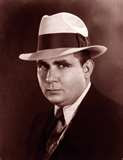Review, Emerald by M.L. Hamilton
The premise:
In one terrible instant, Kai is thrown from his privileged life and plunged into a conflict that began before he was born. Worse yet, he learns that the one man who can help him is his enemy.
Kiameron is the crown prince of DiNolfol. He is torn between two destinies - assuming the crown upon his father's death or answering the call of his non-Human traits, abilities associated with the mysterious Stravad.
The decision is made for him with the destruction of everything he holds dear. Armed with his burgeoning powers and a mysterious talisman that he does not know how to use, Kai strikes back at Gava, the despot who destroyed his life.
Crippled by self-doubt and fear, he falters in his quest, until he meets a man who forces him to take action. However, his new ally is hiding secrets, secrets that will rob Kai of everything he holds sacred.
Reaction:
Prince Kai has inexplicable dreams that disturb and compel him to seek answers. He’s at odds with his father, the King, on how the kingdom of DiNolfol should best handle the encroaching threat of a powerful enemy. Kai has powers that set him apart from other humans ...
And that’s only the start of the conflicts that set in motion this well-crafted and detailed epic fantasy. The settings and world building are fashioned with great attention, counter-balanced by the all-important interplay between characters. To prevent these characters from appearing one-dimensional, the reader is provided insights to their emotions. We experience Kai’s desires and limitations and his quest for vengeance ... always a compelling motive in the fantasy genre. Also, Kai’s princess sister provides another vantage in which to experience Hamilton’s world, as do the villains.
Hamilton then takes more steps to add complexity and intrigue to this saga. Characters that seem one way reveal other facets, and some are not altogether expected by Kai or the reader. There’s plenty of tragedy and devastation to go around, entertaining action sequences, and automatons that seem all but insurmountable. In the end, Emerald proves itself an engrossing fantasy saga.









